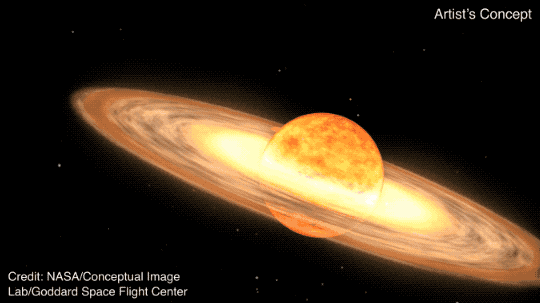Astronomers
How to Watch the Southern Delta Aquariids Meteor Shower
Though not as prolific as the Perseids, this annual spectacle is 'scientifically interesting' because its comet of origin remains a mystery
Astronomers Propose New Criteria to Classify Planets, but Pluto Still Doesn't Make the Cut
The new definition would define planets based on mass, rather than more ambiguous shape and size characteristics
James Webb's Newest Image Shows a Giant Penguin and an Egg
NASA released the dazzling portrait to help celebrate the two-year anniversary of the release of Webb's first images
NASA Will Pay SpaceX Up to $843 Million to Destroy the International Space Station
After the end of this decade, the company will guide the aging laboratory into the Pacific Ocean, where many retired spacecrafts have been deposited
Two Massive Asteroids Will Fly Past Earth This Week. Here's What to Know
Within 42 hours of each other, the pair of large asteroids, which both have no chance of impacting our planet, will approach Earth as they orbit the sun
Jupiter's Signature Red Spot May Have Evolved More Than Once
The planet's massive storm, known as the Great Red Spot, seems to be different from a spot first observed at roughly the same location in the 17th century, a new study finds
A 'Major Lunar Standstill' Is Happening This Year—and Friday's Full Moon Offers 'Dramatic' View
From now through much of next year, the moon will periodically rise and set at its most extreme points, thanks to a rare celestial phenomenon that only occurs every 18.6 years
This Revolutionary New Observatory Will Locate Threatening Asteroids and Millions of Galaxies
Beginning next year, the Vera C. Rubin Observatory will use the world’s largest digital camera to give us a whole new view of the universe
After Months of Glitches and Gradual Fixes, Voyager 1 Is Fully Operational Once Again
Currently 15 billion miles away from Earth, one of NASA’s longest-tenured spacecraft is back from the brink after a technical failure last year put its future in question
These National Parks Are Hosting Astronomy Festivals in 2024
Get outside, ditch the light pollution and marvel at the cosmos on these protected public lands
Missed the Auroras in May? Here’s How to See Them Next Time
Three veteran aurora chasers and a NASA scientist share everything you need to know to check these dazzling displays off your bucket list
Missed the 'Parade of Planets'? These Upcoming Alignments Will Likely Be Better, Anyway
Astronomers tempered expectations of the celestial event this week, pointing to others in the near future as more exciting opportunities for sky watchers
Watch a Blue-Green Comet Illuminate Skies Over Spain and Portugal
The colorful fireball mesmerized onlookers—and its unexpected appearance surprised astronomers who are hoping to better predict when space rocks enter Earth's atmosphere
How to Watch the Dazzling Eta Aquarid Meteor Shower, Bringing an Unusual 'Outburst' to Skies This Weekend
This year's spectacle will be more impressive than usual, as the Earth passes through a concentrated clump of 3,000-year-old comet debris
Were Stonehenge's Builders Guided by the Moon?
Researchers are studying the monument's connection to a celestial event that occurs every 18.6 years
A Rare Nova Explosion Will Soon Bring a 'New Star' to the Night Sky—How to Catch a Glimpse
In an event that occurs only once every 80 years, a distant remnant of a star will grow much brighter, briefly becoming visible to Earth
A Stellar Collision Birthed the 'Dragon's Egg' Nebula, a Puzzling Structure in the Milky Way
The colorful cloud of gas and dust has a violent origin—and this explains the unusual traits of two massive stars within it, astronomers say
The Seven Most Amazing Discoveries We’ve Made by Exploring Mercury
Only two robotic missions have made it to the Swift Planet, but they were crucial for upending many false assumptions of that sun-scorched world
When Are the Next Solar Eclipses? 2026 Promises Totality in Europe, While Much of America Has a Decades-Long Wait
The next total solar eclipse visible from the contiguous U.S. won’t take place until August 23, 2044—but eclipse chasers will have other opportunities to experience totality before that
The Eclipse Chaser Who Led an Expedition Behind Enemy Lines During the Revolutionary War
In 1780, astronomer Samuel Williams journeyed to British-controlled territory to view a total solar eclipse
Page 1 of 18
:focal(1500x871:1501x872)/https://tf-cmsv2-smithsonianmag-media.s3.amazonaws.com/filer_public/8a/bd/8abd6e51-d12a-44c5-915e-6c10520b20ed/gettyimages-1411415005.jpg)
:focal(1051x567:1052x568)/https://tf-cmsv2-smithsonianmag-media.s3.amazonaws.com/filer_public/00/e2/00e2a283-4c55-4442-8304-5382614f5ef3/pia11800large.jpg)
:focal(2139x1354:2140x1355)/https://tf-cmsv2-smithsonianmag-media.s3.amazonaws.com/filer_public/94/63/9463bb82-fefa-4419-ab97-22b5c6033587/interacting_galaxies_arp_142_nircam_and_miri_image.jpg)
:focal(1516x996:1517x997)/https://tf-cmsv2-smithsonianmag-media.s3.amazonaws.com/filer_public/d0/f1/d0f11470-d900-4ca5-9159-6d60c710a179/iss2.jpg)
:focal(1750x1083:1751x1084)/https://tf-cmsv2-smithsonianmag-media.s3.amazonaws.com/filer_public/90/df/90dfeb2c-1659-4b56-969c-9c4255f9c2f7/space_safety_programme_-_near_earth_objects.jpg)
:focal(827x543:828x544)/https://tf-cmsv2-smithsonianmag-media.s3.amazonaws.com/filer_public/30/00/3000c3d2-1519-4375-a014-bcc8b5d5fed1/pia21985orig.jpg)
:focal(1920x1280:1921x1281)/https://tf-cmsv2-smithsonianmag-media.s3.amazonaws.com/filer_public/05/91/059191fc-b3c1-406b-89c0-27f492723ceb/pexels-peter-de-vink-288978-975012.jpg)
:focal(800x602:801x603)/https://tf-cmsv2-smithsonianmag-media.s3.amazonaws.com/filer_public/7f/3b/7f3baf46-149b-42af-83d7-fb8bc18ca3b3/main_noirlab2409b_web.jpg)
:focal(4096x2321:4097x2322)/https://tf-cmsv2-smithsonianmag-media.s3.amazonaws.com/filer_public/c1/85/c185108a-791f-4610-9084-98dcb2c0a49a/voyager2.jpg)
:focal(1000x671:1001x672)/https://tf-cmsv2-smithsonianmag-media.s3.amazonaws.com/filer_public/30/c3/30c3cf9b-cc6f-4c33-888b-41af2a71fe2d/cf36e43e-596b-4104-a59e-9426cb826b92original.jpg)
:focal(360x240:361x241)/https://tf-cmsv2-smithsonianmag-media.s3.amazonaws.com/filer_public/47/ed/47ed2f31-f77b-4c3f-a20a-574bc1a8c214/sinha2_aurorasaurus_pho_20240411.jpg)
:focal(4000x2095:4001x2096)/https://tf-cmsv2-smithsonianmag-media.s3.amazonaws.com/filer_public/03/64/03647ce0-0203-473c-8ba1-c5cc4725de7e/gettyimages-182910299.jpg)
:focal(1792x1007:1793x1008)/https://tf-cmsv2-smithsonianmag-media.s3.amazonaws.com/filer_public/6c/78/6c784dd5-967d-4b5c-9b5e-394a78abd2ab/screenshot_2024-05-20_at_11245_pm.png)
:focal(512x341:513x342)/https://tf-cmsv2-smithsonianmag-media.s3.amazonaws.com/filer_public/68/38/68389cd5-7ba9-42f1-afb5-937a0bfd18ca/8711805373_c1221fe8a3_b.jpg)
:focal(1632x1228:1633x1229)/https://tf-cmsv2-smithsonianmag-media.s3.amazonaws.com/filer_public/2e/cb/2ecb6996-6343-4a73-a916-c10219dc64ce/the_moon_and_stonehenge_james_o_davies_english_heritage.jpeg)

:focal(1094x1354:1095x1355)/https://tf-cmsv2-smithsonianmag-media.s3.amazonaws.com/filer_public/29/3e/293ecff1-66d0-4e59-b1af-4e2a5e17339b/dragon1.jpg)
:focal(720x542:721x543)/https://tf-cmsv2-smithsonianmag-media.s3.amazonaws.com/filer_public/11/a8/11a8f779-8331-4682-8899-246f3c2815ba/main_esa_ssiow_iridescent_mercury_web.jpg)
:focal(1500x1007:1501x1008)/https://tf-cmsv2-smithsonianmag-media.s3.amazonaws.com/filer_public/d9/3f/d93ff800-73dc-47fa-97f3-ef0d1ecf5ece/gettyimages-2147666813.jpg)
:focal(700x527:701x528)/https://tf-cmsv2-smithsonianmag-media.s3.amazonaws.com/filer_public/67/54/67542db1-d75f-411b-8334-03503fa23d7f/eclipse4.jpg)